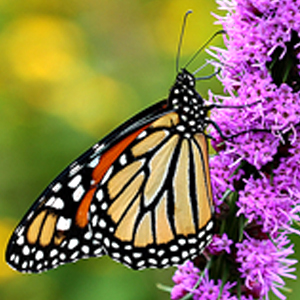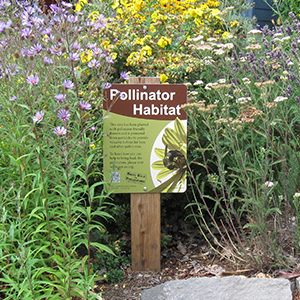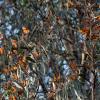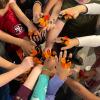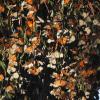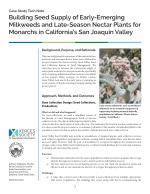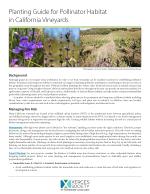As habitat is lost or degraded elsewhere, parks, gardens, and greenspaces can all be managed to provide resources for monarchs and other pollinators.
The seasonal movement of monarchs connects all landscapes. These butterflies will seek out habitat along roadsides, the edges of farm fields, prairies, meadows, and city gardens. The butterflies that leave the overwintering sites soon breed and die, with successive generations moving north until the reach southern Canada, the limit of milkweed growth. Along the way, the adults feed on nectar-rich flowers and lay eggs on milkweed.
Milkweed to feed caterpillars
Nectar plants to fuel breeding and migration
Overwintering habitat
Protection from pesticides and diseases
Plant Milkweed
Visit our Project Milkweed page to find regional milkweed guides, and use our Milkweed Seed Finder to locate seed and plant sources.
Plant Monarch Nectar Sources
One of the most significant actions you can take to support monarch populations is providing nectar-rich flowers and milkweed host plants. Our Monarch Nectar Plant Lists identify the best plants for providing nectar sources for adult monarchs in your area.
Expand Habitat to Help All Pollinators
From years of habitat restoration work we know that, when you give pollinators the habitat they need and protect it from pesticides, biodiversity increases and populations improve. From expansive meadows to backyard butterfly gardens and everywhere in between - every landscape can be optimized to support pollinators.
Avoid Pesticides in Your Garden
Pesticides can legally be applied in far greater concentrations in gardens than they can be on farms. Systemic products, such as those containing neonicotinoids, travel through all parts of the plant including pollen and nectar and can harm pollinators. Help protect pollinators and learn about home gardening products to avoid.
Get Involved in Citizen Science
Across the country there are a variety of Citizen Science projects collecting data to inform monarch conservation.



